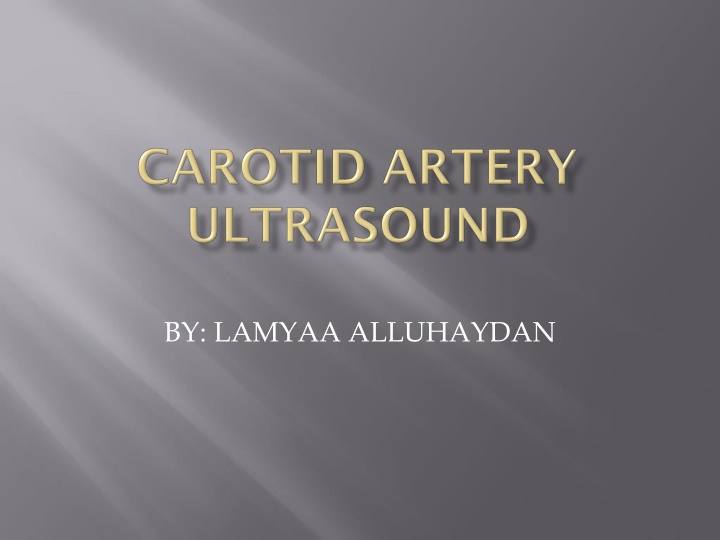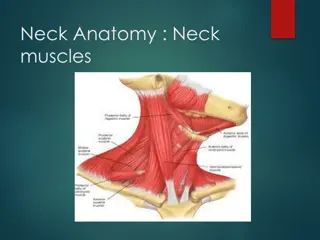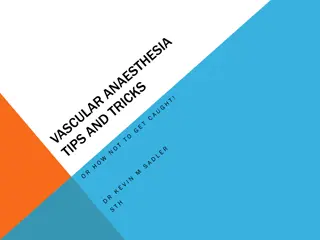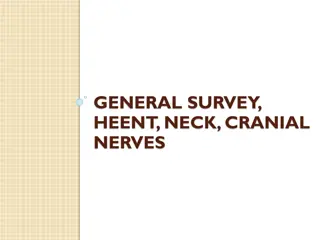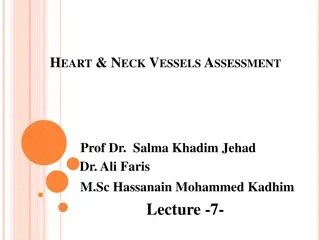Carotid Arteries in the Neck
Carotid arteries are vital blood vessels supplying the brain, neck, and face. Comprising three layers – intima, media, and adventitia – these arteries branch into internal and external divisions, each serving unique functions. The carotid sinus, a widening at the artery's branch point, houses sensors regulating blood pressure. Feeling the carotid artery pulse in the neck is a common practice to monitor health. Explore the anatomy and significance of carotid arteries in maintaining vascular health.
Download Presentation

Please find below an Image/Link to download the presentation.
The content on the website is provided AS IS for your information and personal use only. It may not be sold, licensed, or shared on other websites without obtaining consent from the author.If you encounter any issues during the download, it is possible that the publisher has removed the file from their server.
You are allowed to download the files provided on this website for personal or commercial use, subject to the condition that they are used lawfully. All files are the property of their respective owners.
The content on the website is provided AS IS for your information and personal use only. It may not be sold, licensed, or shared on other websites without obtaining consent from the author.
E N D
Presentation Transcript
The carotid arteries are major blood vessels in the neck that supply blood to the brain, neck, and face. There are two carotid arteries, one on the right and one on the left. In the neck, each carotid artery branches into two divisions: The internal carotid artery supplies blood to the brain. The external carotid artery supplies blood to the face and neck.
Like all arteries, the carotid arteries are made of three layers of tissue: Intima, the smooth innermost layer Media, the muscular middle layer Adventitia, the outer layer
The carotid sinus, or carotid bulb, is a widening of a carotid artery at its main branch point. The carotid sinus contains sensors that help regulate blood pressure. The carotid artery pulse can normally be felt in the neck by pressing the fingertips against the side of the windpipe, or trachea.
